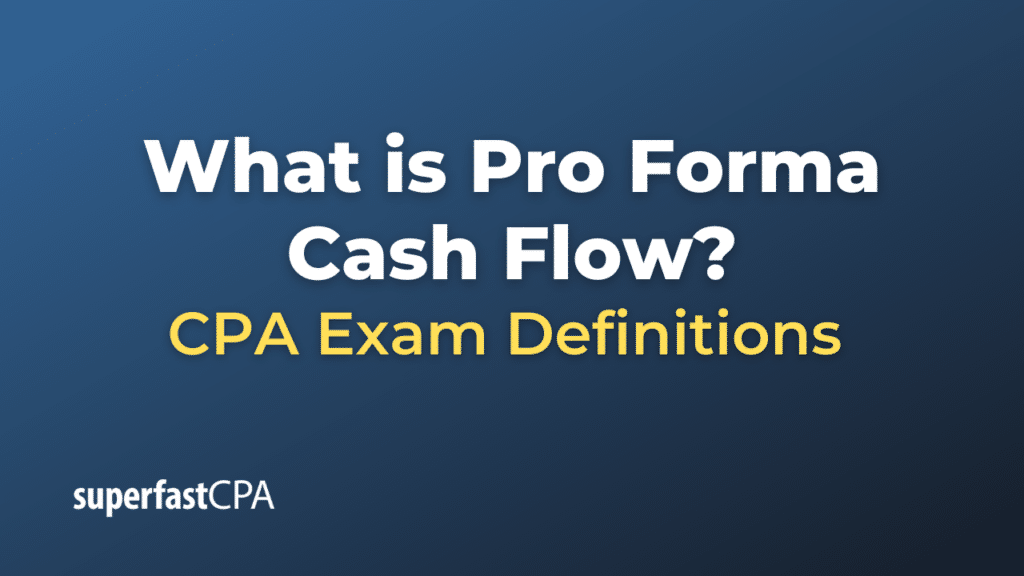Pro Forma Cash Flow
Pro forma cash flow is a method by which companies calculate potential cash flows for future periods, typically under a specific set of conditions or assumptions. Pro forma cash flows are often used in financial models to project future financial performance of a company.
The pro forma cash flow statement includes all the usual elements found in a standard cash flow statement: cash flows from operations, investing, and financing activities. However, unlike the standard cash flow statement, which is based on historical data, a pro forma cash flow statement uses assumptions about future revenues, costs, investments, and financial activities.
For example, a company might use pro forma cash flows to estimate the impact of a new product launch on its financials. It would create a pro forma cash flow statement that assumes certain sales figures, costs associated with the product launch, and potential investments, and use these to project how the new product might affect the company’s cash flow.
While pro forma cash flow can provide valuable insights about a company’s future, it’s important to remember that these projections are based on assumptions, which means they might not accurately predict the company’s actual future cash flow. Therefore, pro forma cash flow should be used as just one tool among many when making financial decisions.
Example of Pro Forma Cash Flow
Imagine a manufacturing company, ManuCorp, is planning to launch a new product line next year. To understand the potential financial impact of this launch, ManuCorp creates a pro forma cash flow statement.
The company expects that the new product line will generate an additional $500,000 in sales each year. However, to manufacture this product, they anticipate spending an additional $200,000 annually on direct materials and direct labor costs, and another $50,000 annually on additional marketing and distribution.
They also plan to purchase a new $300,000 machine to help manufacture the product, which will be depreciated over its useful life of 10 years, resulting in an annual depreciation expense of $30,000.
ManuCorp also anticipates that it will need to increase its inventory levels by $100,000 to support the new product line. This represents an investment in working capital, which is a use of cash.
With these assumptions, ManuCorp’s pro forma cash flow might look something like this:
- Cash inflow from operations (additional sales): $500,000
- Cash outflow from operations (additional costs): -$250,000 ($200,000 in direct costs and $50,000 in marketing and distribution)
- Cash outflow from investing (purchase of machine): -$300,000
- Cash outflow from changes in working capital (increase in inventory): -$100,000
The net change in ManuCorp’s cash balance, according to this pro forma cash flow statement, would be -$150,000 for the next year. However, note that while the cash flow is negative in the first year due to the investment in the machine and inventory, the cash flow in subsequent years would be positive ($250,000) if the sales and cost estimates hold true.
This pro forma cash flow allows ManuCorp to anticipate the potential financial impact of the new product line and make informed decisions about whether or not to proceed with the launch.













